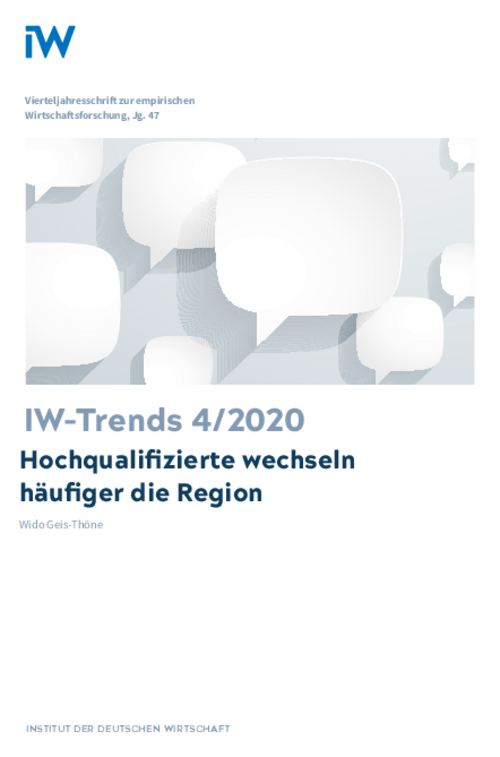Very little is yet known about the socio-economic aspects of internal migration, as migration statistics report merely age, sex, nationality and where the move was to and from. Only since the 2017 survey has the German microcensus included a compulsory question regarding place of residence the previous year, making it useful for studies on internal migration.

The Highly Qualified Move More Frequently Between Regions: An Analysis of Socio-economic Aspects of Internal Migration Based on the Microcensus
IW-Trends

Very little is yet known about the socio-economic aspects of internal migration, as migration statistics report merely age, sex, nationality and where the move was to and from. Only since the 2017 survey has the German microcensus included a compulsory question regarding place of residence the previous year, making it useful for studies on internal migration.
Multivariate analyses show that, all other things being equal, graduates and undergraduates move between government regions (NUTS2) much more frequently than those with less academic educational backgrounds. In contrast, parents move much less often than the childless. Internal migration is altering not only the demographic but also the socio-economic make-up of Germany’s regions. For example, according to an extrapolation based on the microcensus and migration statistics, from 2014 to 2018 the government region of Upper Bavaria managed to attract a net total of around 69,000 undergraduates and graduates between the ages of 18 and 49. The other regions surrounding large metropolises also benefited strongly from internal migration, with the more rural areas suffering corresponding losses. Not only the magnitude but also, to some extent, the direction of migration is different from that for all 18- to 49-year-olds, making it clear that the migration statistics in their current form are an inadequate monitoring tool for internal migration. IW-Trends – Vierteljahresschrift zur empirischen Wirtschaftsforschung aus dem Institut der deutschen Wirtschaft Köln e.V., 47. Jahrgang,

Wido Geis-Thöne: Hochqualifizierte wechseln häufiger die Region – Eine Analyse auf Basis des Mikrozensus zu sozioökonomischen Aspekten der Binnenwanderung
IW-Trends

More on the topic

Pharmaceutical industry: Increasing pressure on the labor market
The shortage of skilled workers poses significant challenges for pharmaceutical companies in Germany and is expected to become increasingly problematic in the context of demographic changes. Concerning Germany's positioning in the international competition ...
IW
Immigration from Latin America: Successes and potential for securing skilled workers
Against the background of the baby boomers leaving the labour market, Germany will be increasingly dependent on skilled workers from abroad in the coming years in order to secure growth and prosperity.
IW